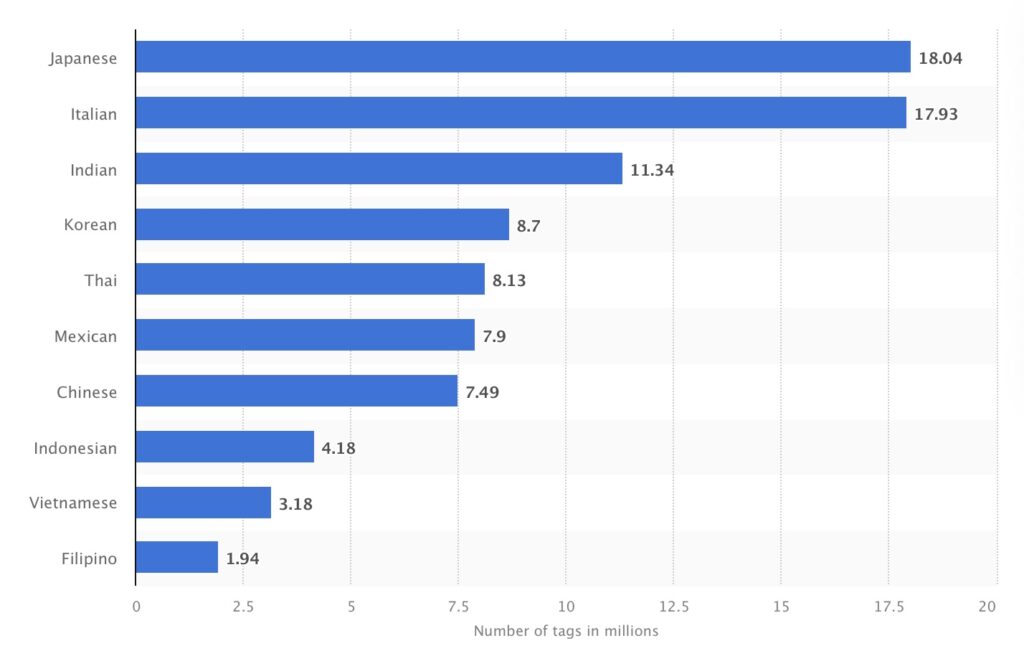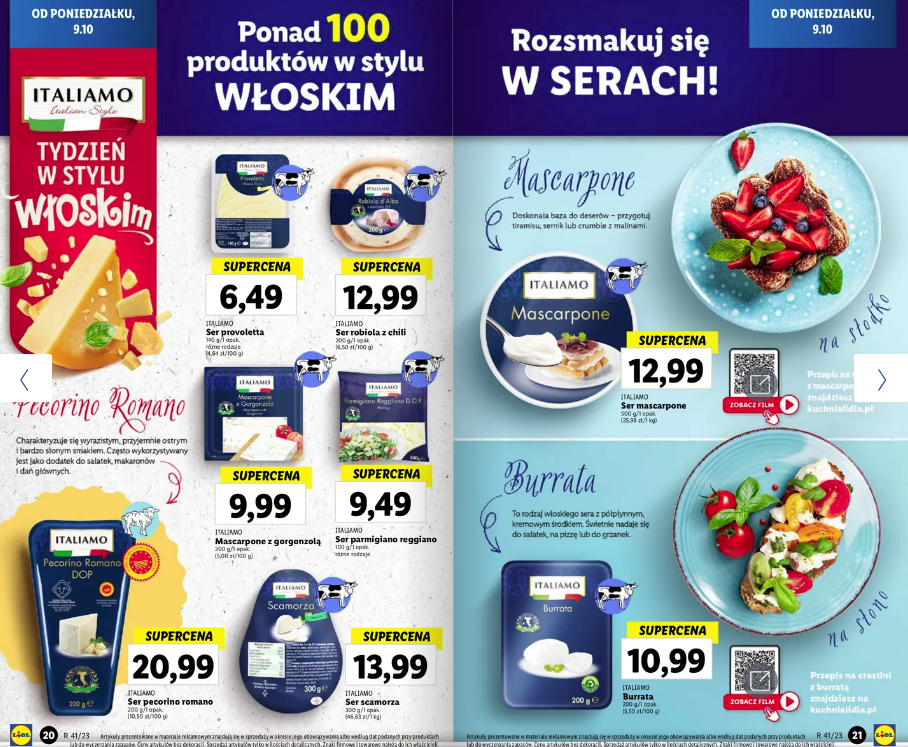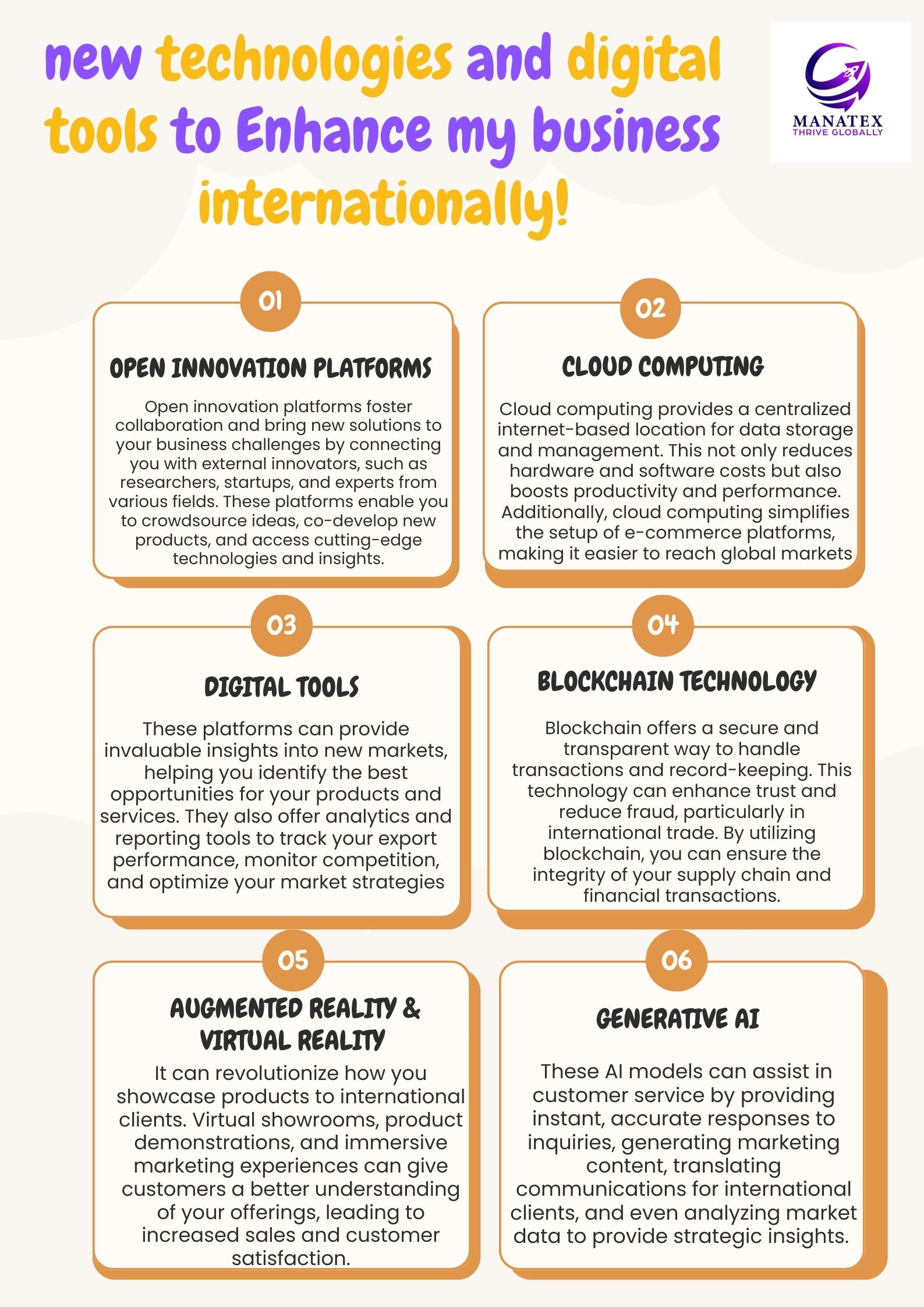According to the data provided by Research Reports World, the size of the worldwide Ethnic Food market has reached 52 billion USD in the year 2022. This market is expected to grow annually by 7,64 % CAGR. Thus, it will cross 80 billion USD in 2028. It makes this category very attractive for both: exporters and importers.
The World Bank organization has recently reported that 184 mln. people (2,3% of the world’s population) live outside of their country. The willingness to work abroad has increased globally for a few years. Also, the tourism industry is getting back on track after the Covid-19 pandemic. Statista states that the contribution of the tourism industry to the global economy has reached 7,7 trillion USD in 2022.
People travel more and discover new cuisines. Also, working migrants are looking for familiar food abroad. The most popular international cuisines are Japanese, Italian, and Indian (picture #1 below). However, this opportunity is not limited just to that. For example, it is estimated that there are almost 500 ethnic Polish shops in the UK alone (150 of them in London) that target Polish consumers who live and work in the UK.
Picture #1: Most popular cuisines worldwide (Feb. 2022) based on Instagram tags (www.statista.com)

These are not just small ethnic shops that distribute local products of different origins. Major retail chains are increasing shelf space for ethnic food and promoting it heavily. Some of them even create their brands in the category. For example, the German discounter chain Lidl which works successfully in many markets has created an assortment of Italian, Greek, and Spanish food and is promoting these categories from time to time in different countries.
Picture #2: “Italian Week” in Lidl, Poland

So, how to build distribution of these traditional food products? It depends on the target channel.
Traditional retail channel: Let’s imagine that a company targets small shops that distribute Indian or Korean specialties only. In this case, this is necessary to approach distribution companies that are covering this specific channel. Sometimes, big distributors of ethnic products cover a few countries. For example, the author had an experience with an ethnic food wholesaler from Germany who was also working in France with the help of local partners.
Modern retail channel: There can be a couple of scenarios.
- Selling to retail under private label. This is a good scenario for companies that are ready to sacrifice their brand and have the capabilities to prepare products fully for private label distribution (the company can pack the product in different languages, find different solutions in logistics, etc.). In this case, the retailer is promoting the product on its own budget. This is not an easy task to find the opportunity. It might help to do some initial research and understand which retailer lacks specific products or the opposite builds a new lineup of ethnic food. Exhibitions like “Marca” can help to get in contact with buyers. Also, some retailers organize “Suppliers Days” to attract new potential suppliers of unique products and start collaboration.
- Selling under the original brand name. This is not a walk in the park . Again, it’s advised to monitor the trends in the category in the different retail companies to find a niche on the shelf and build an offer to the buyer based on the opportunity to increase the turnover of the category. In this case, the brand owner is mainly responsible for the product promotion budget.
E-commerce: www.amazon.fr shows more than 2000 results for the keywords search “Italian Pasta” and 265 results for “Japanese candies” (in French). It means, on the one hand, that the ethnic food category is massively distributed in e-commerce (which is good because it means that consumers are looking for ethnic products online), but on the other hand, it means that it would be difficult to differentiate the product on the platform. The company should be prepared to invest in online marketplace promotion tools and experts if it wants to generate a turnover in a certain market
One more thing to remember is that relationship building is important for any B2B deal . However, in the case of ethnic products, it might be even more critical: the number of direct customers can be limited, and their loyalty is king.





